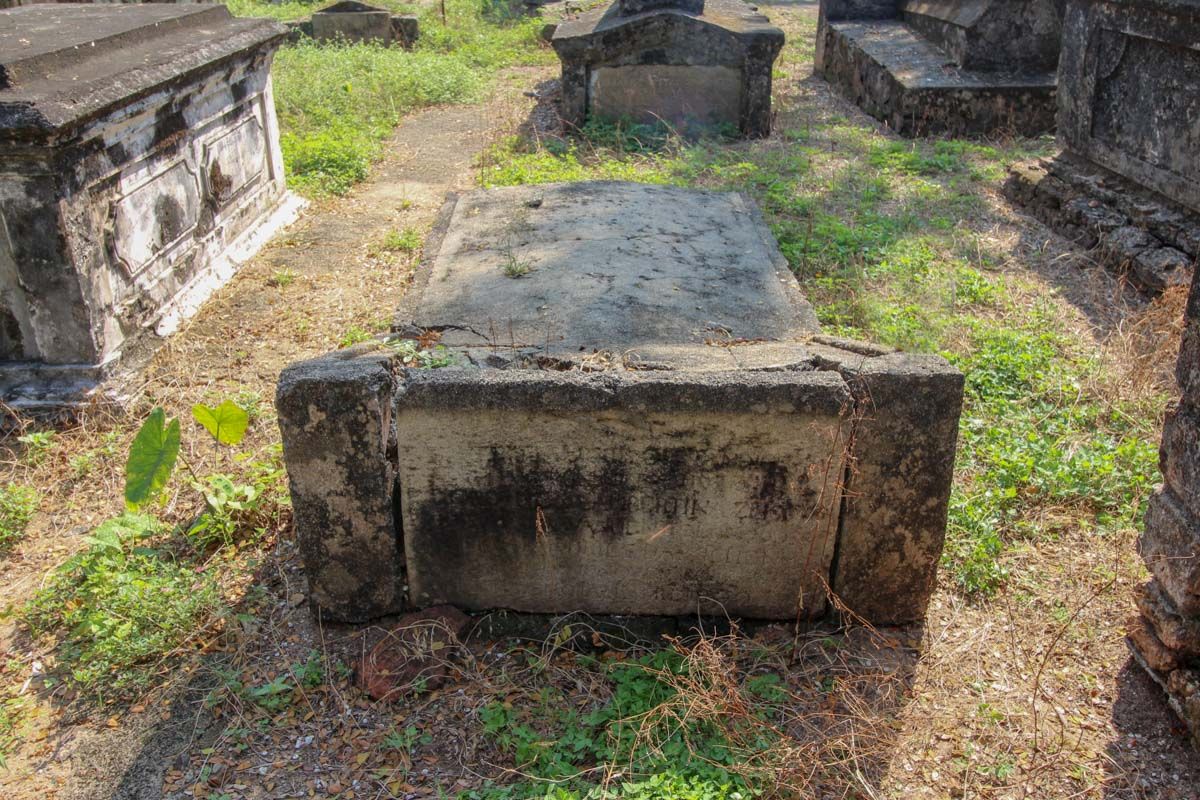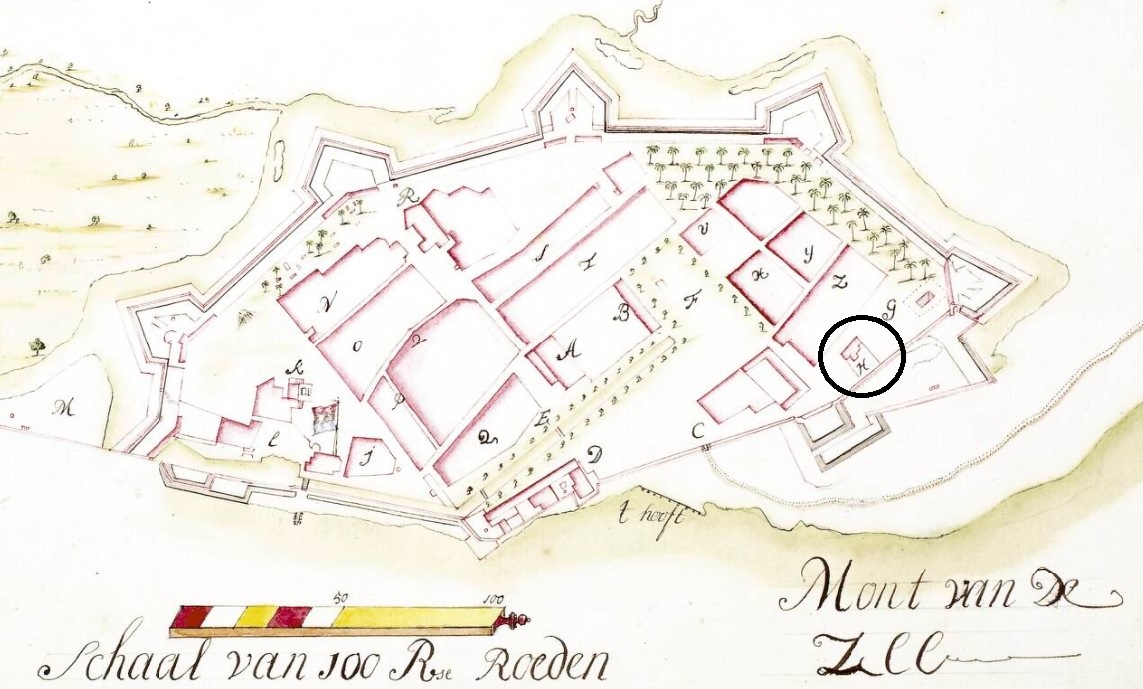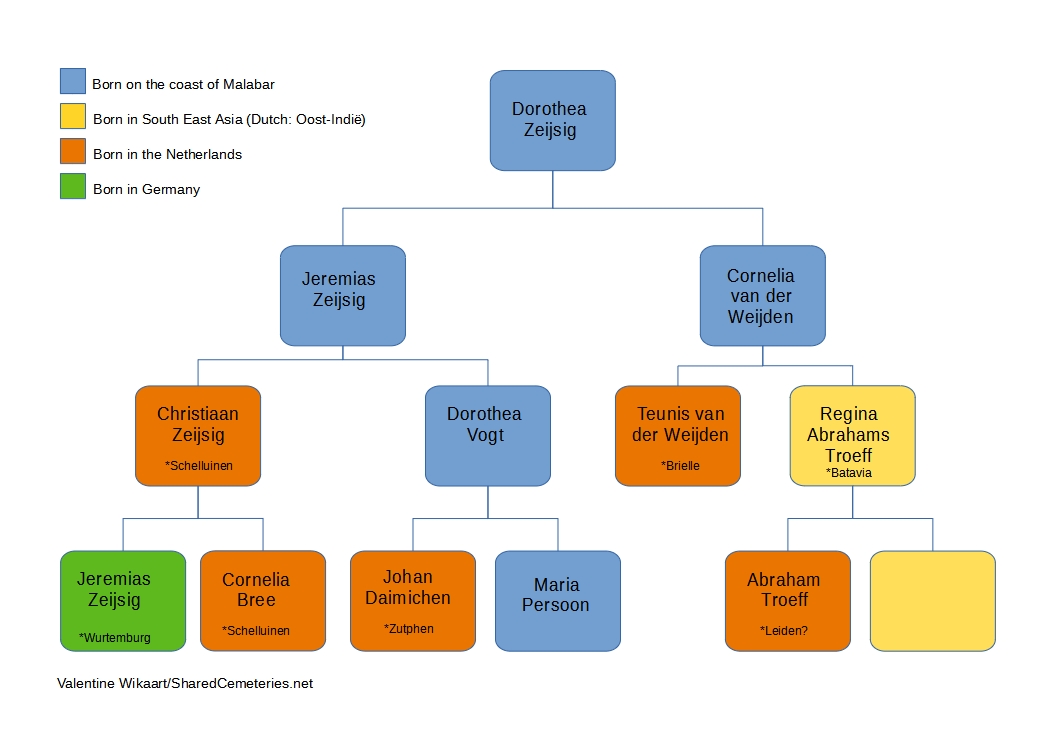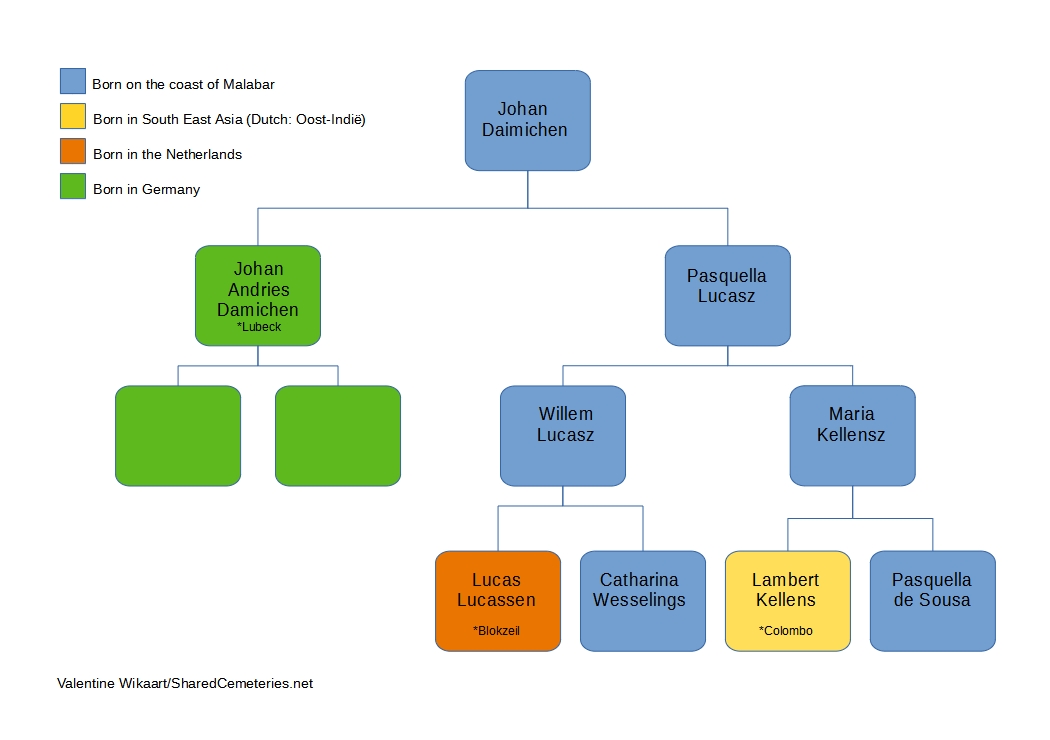
Fort Kochi - Dorothea Lambertina Zeijsig (1774-1800)
Dorothea's date of birth and death is only known from her tombstone at the Dutch cemetery in Kochi. She was born 6 November 1774 and died 10 November 1800. She was only 26 years and 4 days old at the time. From the fragmentary preserved baptism and marriage records of Kochi we know that she was baptized in November 1774 as the daughter of Jeremias Zeijsig[i] and Cornelia Elisabeth van der Weijden. The baptismal witnesses were Jan Lambertus van Spall and Maria Margaretha Prins. Dorothea had an older sister named Cornelia Ernestina. She was born and baptized in November or December 1770.[ii]
Dorothea was only fifteen years old when, in April 1790, she married the nineteen-year-old junior merchant Johan Andries Daimichen. To marry so young was unusual for a girl of European descent. She went through a lot in her short life. She lost her mother when she was eight, had her first child at sixteen, and when she died she was just twenty-six years old and the mother of three children. The eldest child was baptized on 30 October 1791 and was given the names Johan Christiaan Jeremias. The baptismal witnesses were Johan Adam Cellarius and Maria Catharina Daimichen, the young couple's brother-in-law and sister-in-law. Johanna Christina Helena was baptized on November 10, 1793. At this baptism brother-in-law and sister-in-law Johannes van Blankenberg and Anna Helena Daimichen took office. The third child was named Godefrudus, after Johan's recently deceased brother. He was baptized and christened on 12 July 1795 by Dorothea's sister and her husband Cornelia Zeijsig and Abraham Gerritszn van der Sloot. The absence of Dorothea's father and Johan's mother as baptismal witnesses is striking, despite the fact that they were both still alive.[iii]
Even an extensive search through the archives yields little additional information about the life of this couple Daimichen-Zeisig. They lived in a time when the authority over Kochi was taken over by the English after a short fierce battle and the VOC servants were cut off from their contacts with Batavia and the Netherlands. From 1794, Dutch ships no longer arrived at the Kochi roadstead, after English blockades prevented the VOC from allowing ships to leave the Netherlands. Moreover, the impending bankruptcy of the company was finalized in 1796. Not only had the city of Kochi suffered heavy damage from the shelling of the city by the English, but many were cut off from work and income.
After her death in 1800, Dorothea Zeijsig was buried in Fort Kochi. She has a simple grave monument with an upright plaque. The text reads: Hier rust / ter zaaliger wederopstanding / wylen de juffrouw Dorothea Lambertina Daimichen-Zeisig /geboren den 6 Nov 1774 /en obiit 10 Nov 1800. In translation: Here rests / awaiting her resurrection / the late miss Dorothea Lambertina Daimichen-Zeisig / born on 6 November 1774 / and died on 10 November 1800.
Johan and Dorothea were both born in Kochi. Johan had a German father and a mother who was born on the coast of Malabar. Dorothea had two parents who were born on the Malabar coast and yet they did not consider themselves to belong there, as evidenced by what little has been found about them.
 Plan of the town of Cochin, anonymous (c.1720), with the location of the Orphan House
Plan of the town of Cochin, anonymous (c.1720), with the location of the Orphan House
(Universiteitsbibliotheek Leiden, Collectie Bodel Nijenhuis 002-11-029)
One of the few VOC institutes that remained active was the Orphan Chamber (‘weeskamer’). Not only did it take care of the orphans of VOC servants, but it also functioned as a kind of bank. The Orphan Chamber had to manage the money of the orphans and therefore also lent money and provided mortgages at a fairly high interest rate. The only way to get money to Europe or vice versa was to deposit the amount in the cash register of the Orphan Chamber, which issued a registered bill of exchange that could be collected at the Orphan Chamber of one of the Chambers of the VOC in the Netherlands. And the only way to avoid the – often unwanted – interference of the Orphan Chamber was to have a will draw up and in it to exclude the Orphan Chamber from caring for the orphans. Because the children of Johan and Dorothea are not mentioned in the Orphan Chamber, it is possible that their will contained such an exclusion or, and this cannot be excluded either, the children had already died before their mother. In any case, Johan Daimichen wrote a note to the Orphan Chamber on 1 September 1803, in which he announced that his financial condition had deteriorated to such an extent because of the prolonged war riots that he was unable to pay the two-year interest of 300 rupya before the end of August on his two homes mortgaged at the Orphan Chamber. Therefore, he requested that his debt be increased by 300 rupiah so that if help came from the homeland, which they now expected every day, he could pay it. After all, the properties were worth much more than they were mortgaged with, Daimichen argued, and it was unwise to sell the houses under current conditions, as they would not yield even half of their real value.[iv] Considering the amount of letters of this kind in the file, the need was high.
Johan therefore regarded the Netherlands as his fatherland. The note to the Orphan Chamber was written in Dutch, like all correspondence in this archive. Nevertheless, it can be seen from the signatures under the letters that the signatory had a different hand of writing than the regular scribe in which the letters are drawn up. As early as 1760, the Orphan Chamber complained that there were so few people who spoke and wrote Dutch and that the official language was usually Portuguese. Throughout the eighteenth century, not a handful of European women could be found, so virtually all European men who continued to live on the Malabar coast had no choice but to marry a woman who had been born there. Often these were women of a European father and a mother who was partly European. What about Dorothea and Johan?
 Ancenstors Dorothea Zeijsig
Ancenstors Dorothea Zeijsig
 Ancestors Johan Daimichen
Ancestors Johan Daimichen
Notes
[i] Name variations are: Seisig, Zeijslich, Sijsig, Zeijsing, Zijzig, Zeijng, Seijsing. For readability I chose Zeijsig
[ii] Date of baptism is not filled in, only …br. Her baptism is the second to last of the year 1770.
[iii] Gens Nostra 1992, doop- en trouw boeken Cochin
[iv] NA 1.11.06.11_1546 scan 0043 Weeskamer 1800-1803
- Last updated on .


